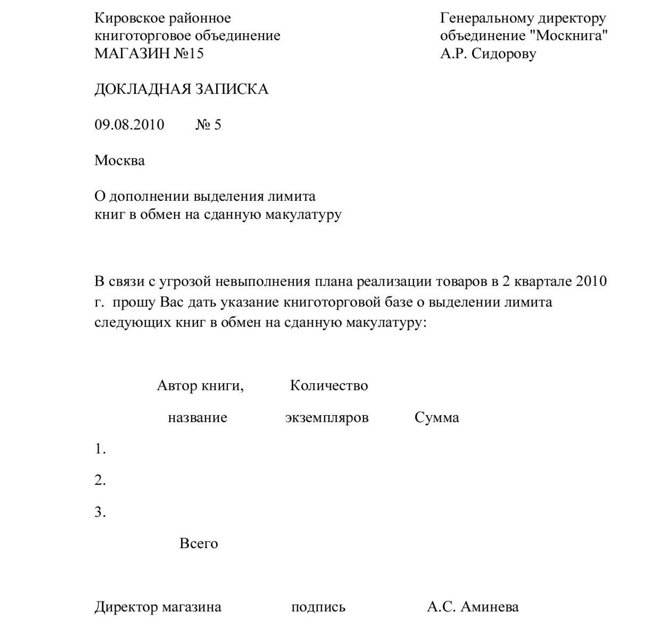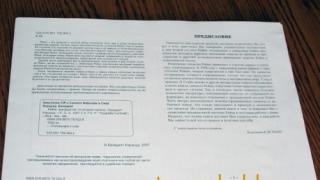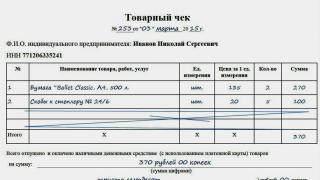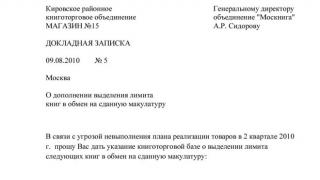Management, that is, making decisions about the allocation of resources, is possible only on the basis of reliable and timely information. This information must be correct and arrive promptly. This is precisely what the official document called the "memorandum" serves for, which you will learn about later.
What is this note?
A memorandum is a standard clerical form of transferring information "bottom-up" - from lower-level employees to management. Memos describe critical events, ongoing activities, and the overall health of the firm. Based on the reports, the manager can make a more accurate analysis of the state of affairs in the organization and give adequate commands.
The creation of a report can be an idea of both the subordinate himself and his direct management. If the initiative comes from management, then often the order to perform this work is brought to the subordinate verbally.
There are other types of notes for business communication. They should not be confused with a report, so consider their popular types:
- Memo - used to transfer information between departments or employees that are not directly subordinate to each other. Some requests for cooperation or notifications of ongoing events within the organization may be expressed in this way, so this form cannot be considered a memorandum.
- , in which the employee usually explains to the management his actions, most often those that led to a disruption in the normal operation of the organization. This is also not a report.
Below you can watch a video that explains the difference between memos and memos:
It should be borne in mind that the memorandum is a serious legal document. You may need to refer to it in legal proceedings in the future, so be careful about its contents.
Types of memorandum
There is a conditional division of reports by subject, the approximate direction of which is clear from the title:
- Reporting. Most often, such reports are used. Their compilation is regulated in advance by a higher structure to control parameters that regularly need simple but continuous monitoring.
- Initiative. They are submitted to management irregularly in cases where subordinates have a proposal for rationalizing or optimizing processes in the enterprise.
- Informative. They are written to notify superiors about some drastic changes (often negative) in the well-established work of a department or company. In such cases, a quick management response is usually required in order not to incur losses or miss out on possible profits.
Regardless of the subject, the document can be:
- Internal. To resolve issues that arise within the institution, internal reports are used. Decisions after their consideration are made by the organization's own employees.
- external. An external report is prepared for an outside organization that is sought to be involved in the processes taking place in its own institution.
How such memorandums are compiled, we will consider further.
How to write an internal memorandum?
Internal reports are usually written on plain sheets of paper. We list the required components and indicate their traditional location:
- To whom the report is intended (who will have to make a decision) - at the top right, in the dative case.
- Information about the person who compiled the document with an indispensable indication of the department (division). It is also indicated on the right, below the previous part, in the dative case.
- The name of the document - "Memorandum" - in the center of the sheet (dot, colon and other punctuation marks are not put after the name). If the topic of the report is standard (about absenteeism, about the offer, about bonuses) - you can immediately add it under the title.
- Registration number and date (if required by internal office work).
- It is possible to mention the motives that caused the note to be drawn up.
- From the paragraph - a statement, that is, a statement of the situation that has developed in any process from the point of view of the respondent (facts, events, circumstances, chronology, causal relationships).
- From the new paragraph - analytics, that is, an accurate description of the problems that already exist or are possible in the future, as it appears to the speaker (sometimes potential opportunities are given that are not yet used, but can serve the benefit of the organization).
- From a new line - recommendations, that is, ways to eliminate problems or proposals for minimizing losses if it is impossible to avoid the negative impact of certain factors (or the best way to develop unused resources).
- Date, date, personal data of the speaker - signature, position, initials (full name).
A blank document form can be downloaded.
The most popular forms of such a memorandum will be considered below.
About violation of labor discipline
Such a document is very serious, because on its basis it can be:
- issued (reprimand);
- demotion of an employee;
- the procedure for dismissal of an employee was launched under the relevant article of the Labor Code of the Russian Federation;
- open trial.
Of course, such information is internal, so its penetration outside the institution is undesirable.
The main text should clearly and specifically indicate what the employee was guilty of. It is even better if the articles of the Labor Code of the Russian Federation and the internal regulations violated by the employee are directly cited.
The text usually contains a mention that the employee gave an explanation for his behavior in an explanatory note, indicating the number, date and other identifiers of this document. If there is no such explanation, this is also indicated.
A sample internal memorandum stating that the employee violated labor discipline because he was not at the workplace can be downloaded.
About failure to perform duties
As a rule, for failure to perform official duties, the employee should be punished in the form of bringing to disciplinary responsibility. Its forms can be:
- non-payment of premium;
- fine;
- rebuke;
- demotion.
A sample memorandum on non-fulfillment of official duties is proposed to be downloaded.
The employee has the right to sue the employer if he considers the punishment unfair or excessive, therefore, when compiling a report, the accuracy of the wording and the verification of the requirements presented are necessary, for example, with reference to the internal work schedule.
About bonuses
This form of reporting is used in cases where an employee is assigned a bonus. In the main text, it is signed for which work the bonus is assigned and in what amount. You can download a sample of such a document.
How to write an external report?
Such documents are drawn up on company letterhead with the obligatory indication of details and contact details of the company. The emblem on the form will help the recipient quickly understand who he is dealing with. To confirm the authenticity of the document, a blue seal of the enterprise must be affixed.
Since business paper will be sent to the outside world, the requirements for its filling are as follows:
- The name of the recipient organization. Abbreviations and omissions are not allowed (top right).
- The official to whom the document is sent (usually the "General Director" or something similar) - under the previous part.
- The name of the sending organization, also without abbreviations and omissions (top left).
- The full official title of the document (a memorandum on an employee's business trip, for example) is in the center of the document.
- The essence of the matter, which is stated in a business form, is concise and clear.
- Position, signature and initials of the head of the sending organization (in the center of the lower part).
- Information about the performer - position, initials, contact (office) phone number (below the previous part).
Here is a sample of such a note:

5 requirements for the report form
The memorandum does not have a strictly mandatory form, however, it is a clerical message, therefore it is written in an informal format, which has the following mandatory elements:
- The required information must be clearly spelled out.
- Gross errors and omission of important data are unacceptable, otherwise the report may be invalidated in the future.
- Emotional assessments and a personal attitude to the described situation are usually not welcome, as they do not contribute to the adoption of an administrative decision.
- When describing the circumstances, it is necessary to indicate all the essential details of the situation. Minor details can be omitted.
- At the end of the document, the position of the compiler and his full name must be prescribed.
Above, you got acquainted with the different types of reports, so now you understand much better how to compose them and what should be written in them. It is especially useful to know this for employees of state institutions, whose chiefs are obliged to write memorandums.



